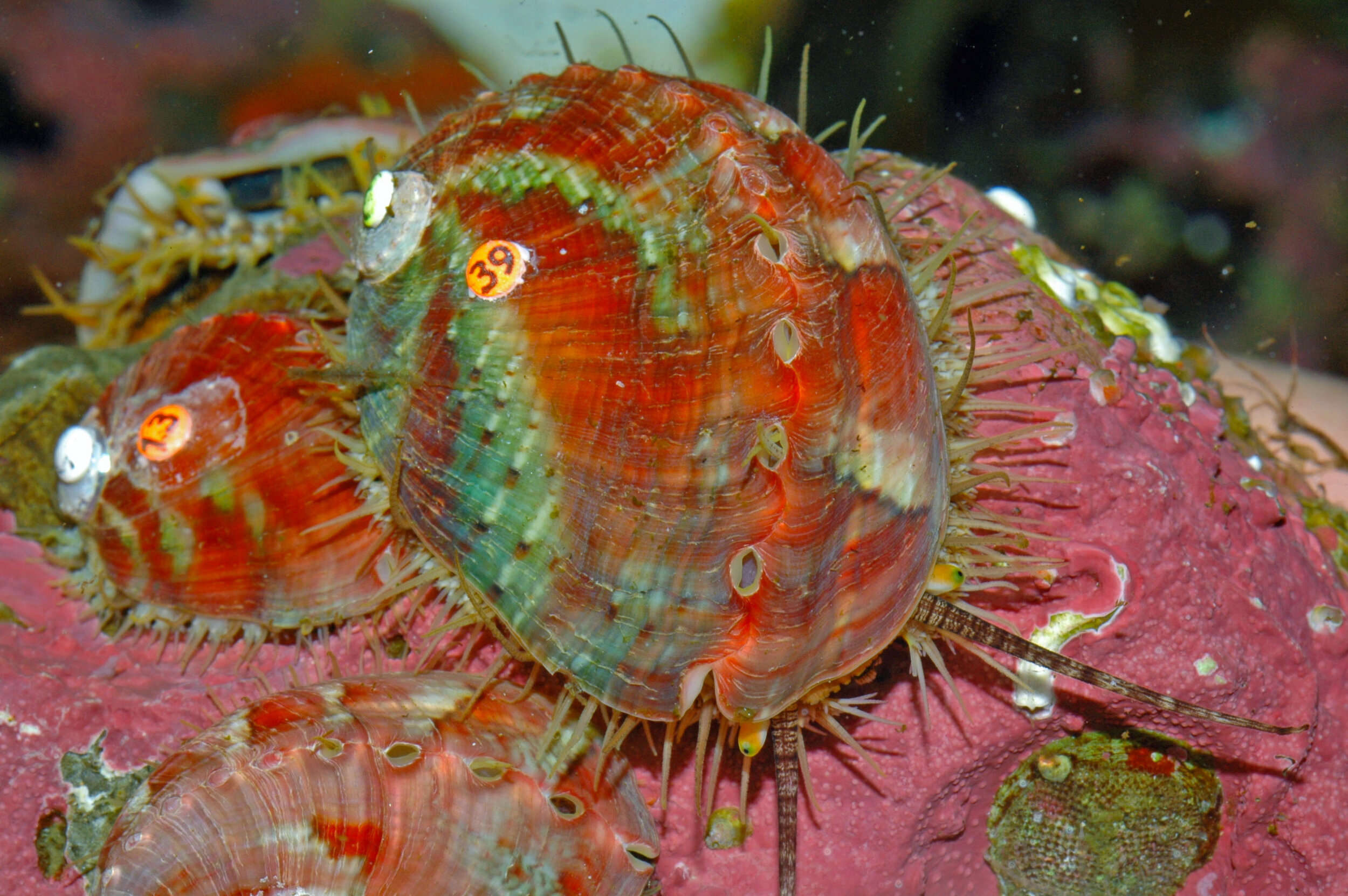Pinto Abalone Facts
Pinto abalone (Haliotis kamtschatkana) are sea snails with colorful shells that can be found along the rocky seashore. Unfortunately, their population has declined by 97% in Washington State due to the over-harvesting. Low remaining numbers have hindered their ability to reproduce in the wild because they are “broadcast spawners,” meaning when a male releases sperm, a female needs to be nearby for her eggs to be fertilized. However, because of their small population, they have difficulty reproducing in the wild. In 2019, pinto abalone were listed as endangered in Washington State and can no longer be harvested in the state.
DID YOU KNOW?
Pinto abalone thrive in areas with heavy kelp and rocky surfaces where crustose coralline algae grows. This has the best potential to support abalone life as they can feed on the abundant algae.
The brightly colored pinto abalone has noticeable rings running across the length of the shell. Each year another ring is formed around the spire of the shell during the middle of summer. This way, you can tell how old an abalone is by counting the number of rings on its shell.
A natural predator of the pinto abalone is the sea otter, cracking open the shell in search of the meat inside.
The underside of the shell is made up of a nacreous material, known to us as mother of pearl. This is another common reason they have been so heavily foraged throughout the years.
Photo by Janna Nichols. Banner photo by Josh Bouma.


